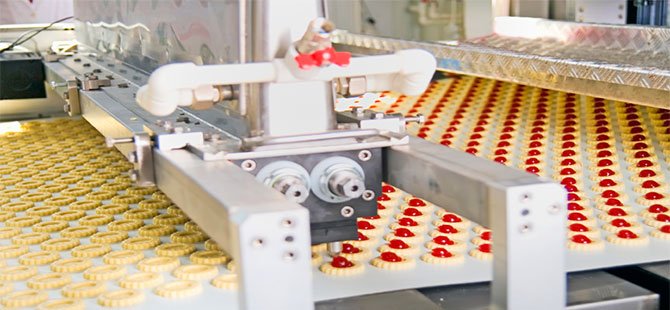Supply chain management in the industrial goods sector is a multifaceted challenge, requiring precision, adaptability, and resilience. As businesses strive to meet the demands of a dynamic market, they encounter various hurdles along the supply chain. In this article, we will delve into the significant challenges faced by industrial goods manufacturers and explore effective solutions to enhance supply chain efficiency.

Challenges in Supply Chain Management for Industrial Goods
Globalization and Geopolitical Issues
The industrial goods supply chain often spans multiple countries, exposing manufacturers to geopolitical tensions, trade disputes, and regulatory complexities. Changes in tariffs, political instability, or sudden policy shifts can disrupt the flow of goods.
Demand Volatility
The demand for industrial goods can be highly unpredictable, influenced by economic fluctuations, market trends, and unexpected events. This volatility poses a challenge in terms of inventory management, production planning, and maintaining optimal stock levels.
Complexity in Product Variability
Industrial goods often come in various configurations and specifications. Managing the complexity of different products, each with unique components and manufacturing requirements, can be a logistical challenge.
Supplier Reliability and Risks
Dependency on a network of suppliers exposes industrial goods manufacturers to risks such as supplier bankruptcies, quality issues, and disruptions in the supply chain. Ensuring the reliability and resilience of the supplier base is crucial.
Technology Integration
Adopting and integrating advanced technologies, such as IoT, AI, and data analytics, into the supply chain can be challenging. Industrial goods manufacturers often face obstacles in aligning these technologies with existing systems and processes.
Solutions to Enhance Supply Chain Management
Visibility and Transparency
Implementing advanced tracking and monitoring systems provides real-time visibility into the entire supply chain. This transparency allows businesses to anticipate disruptions, identify bottlenecks, and make informed decisions to enhance overall efficiency.
Data-Driven Decision-Making
Leveraging data analytics enables industrial goods manufacturers to make data-driven decisions. Predictive analytics can forecast demand, optimize inventory levels, and identify areas for improvement within the supply chain.
Collaborative Relationships with Suppliers
Building strong, collaborative relationships with suppliers is key to mitigating risks. Regular communication, performance assessments, and mutual understanding of each other’s challenges contribute to a more resilient and responsive supply chain.
Diversification of Suppliers and Risk Management
To minimize dependency on a single source, industrial goods manufacturers can diversify their supplier base. Additionally, implementing risk management strategies, such as supply chain mapping and scenario planning, helps identify and address potential risks proactively.
Embracing Lean Manufacturing Practices
Adopting lean manufacturing principles helps streamline production processes, reduce waste, and improve overall efficiency. Just-in-time inventory systems can help manage demand volatility and minimize excess stock.
Advanced Planning and Forecasting
Utilizing advanced planning tools and forecasting models helps businesses anticipate market trends and demand fluctuations. This allows for better production planning and inventory management, reducing the impact of sudden changes in demand.
Investment in Technology and Automation
Industrial goods manufacturers should invest in technology and automation to enhance efficiency and reduce manual errors. Automated systems for order processing, inventory management, and production planning can significantly improve overall supply chain performance.
Continuous Employee Training and Development
The human element is crucial in supply chain management. Providing ongoing training for employees ensures that they are well-equipped to handle the complexities of the supply chain, adapt to new technologies, and contribute to process improvements.
Strategic Inventory Buffering
Building strategic inventory buffers for critical components or materials helps mitigate the impact of supply chain disruptions. This ensures a continuous flow of production even in the face of unexpected challenges.
In conclusion, navigating the challenges in supply chain management for industrial goods requires a holistic approach that combines technological advancements, strategic planning, and collaborative relationships. By addressing these challenges head-on and implementing effective solutions, industrial goods manufacturers can build a resilient and efficient supply chain capable of meeting the demands of a dynamic and globalized market.








